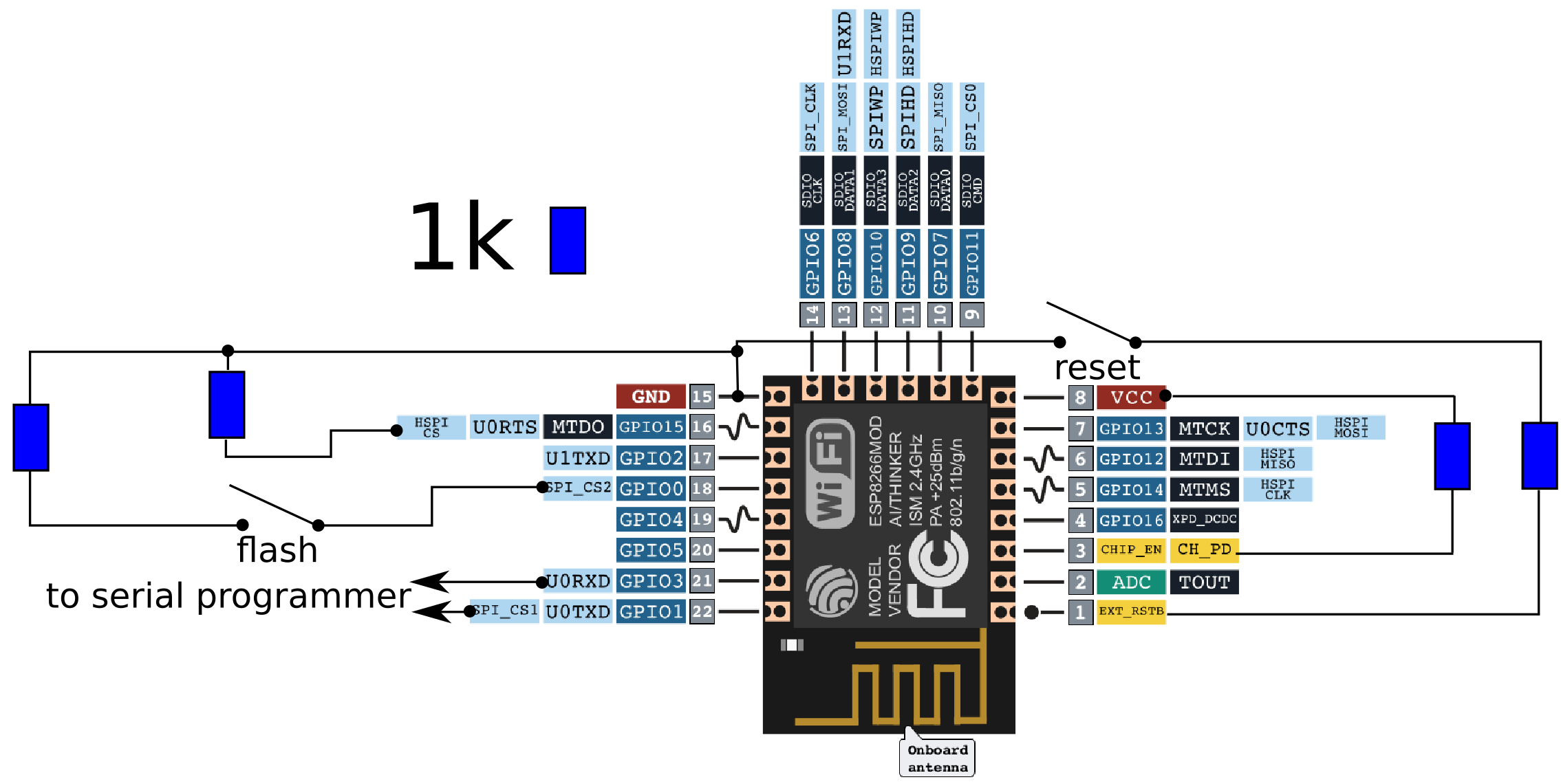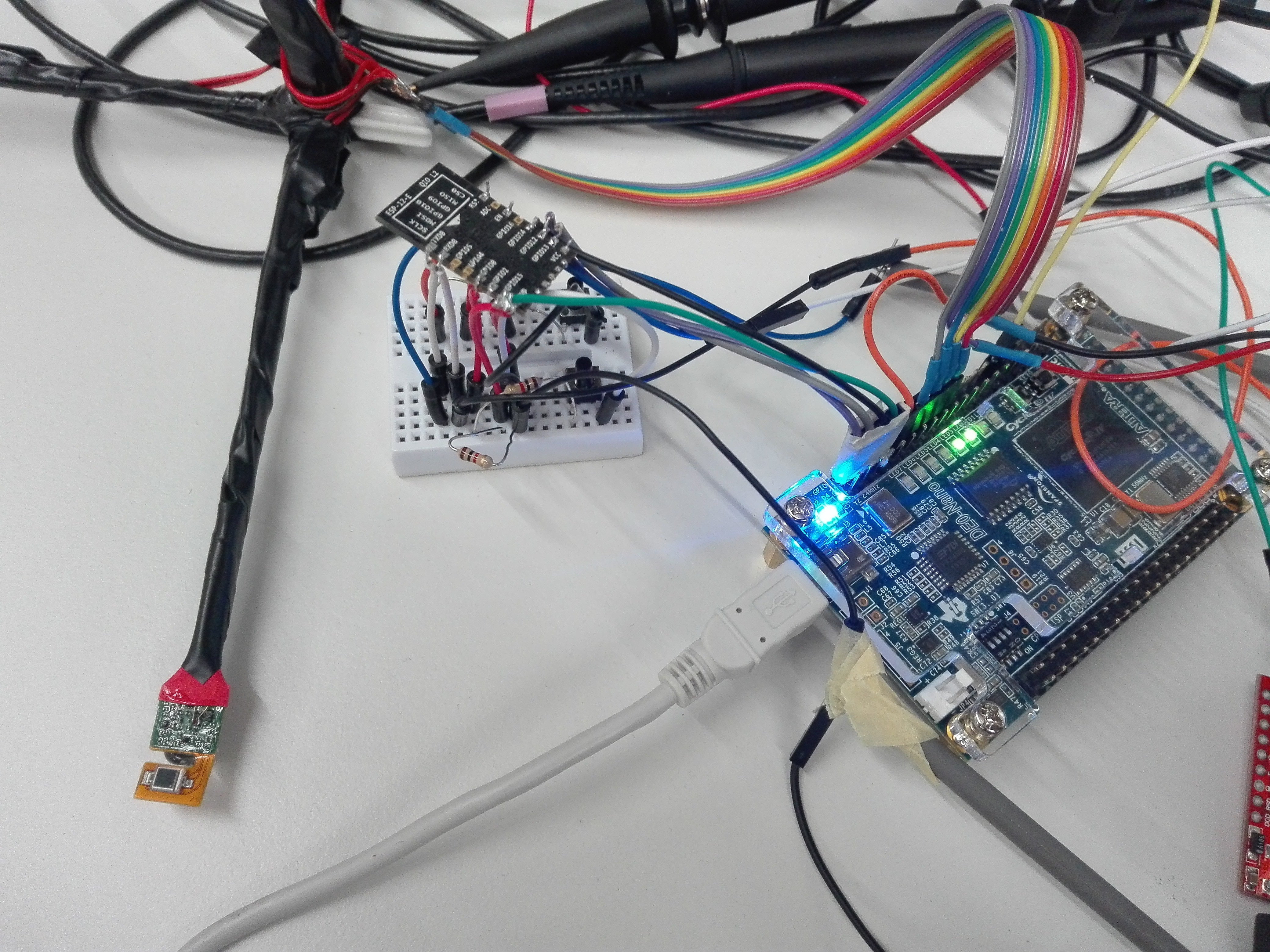The MKR1000 has always been an intermediate solution. even though he is quite small, there is an even smaller wifi chip, the esp8266. it has a programmable micro-controller and just needs some resistors, two buttons and a serial programmer to be programmed.
NOTE: there seems to be a lot of confusion out there, about how to correctly wire the little guy in order to program it. therefor the following should help you get started:
- do not use the vcc 3.3V of your serial programmer (usb does not seem to provide enough current for the esp, which can peek to 200 mA). instead use a voltage supply with enough current. The esp seems to be very sensitive towards incorrect voltage, which leads to undefined behaviour causing major headaches
- the slave_select pin is GPIO15 which needs to be low on boot
- use the following wiring scheme:

When programming the esp (be it from arduino ide or commandline) hold both buttons pressed, start download, release reset, then flash. your bin should start downloading, if not try again. (make sure you pay attention to the NOTE above).
We removed the SPI core we were using so far, simply because we didn't trust it. We noticed some glitches in our sensor values and one suspicion was the SPI core. anyways...here is how it looks now:

The esp is acting as the SPI slave (which makes a lot more sense, because the fpga should control when stuff is send out). One SPI frame for the esp consists of 32 bytes = 256 bits = 8 * sensor_values. In each lighthouse cycle, a frame with up to eight sensor values is transmitted to the esp via SPI. The code for the esp hasn't changed much compared to the previous MKR code, except for the SPI slave and that we send out 8 values via UDP at one go, instead of each sensor individually.

 Simon Trendel
Simon Trendel
Discussions
Become a Hackaday.io Member
Create an account to leave a comment. Already have an account? Log In.